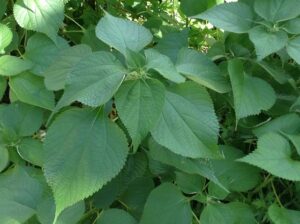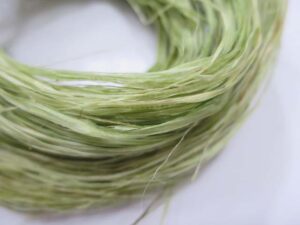Cotton has an excellent ability of absorbing water and even the air can pass through, making it a material that is cool in the summer and warm in the winter. Moreover, it is soft , so it has been used in a variety of daily necessities, including clothing. However, originally there was no cotton in Japan, and it is said that seeds were brought to Japan by people from Southeast Asia in 799 AD. But even after that, cotton cultivation did not continued in Japan, and many products were dependent on imports from overseas.
Cotton was cultivated and became popular in Japan around the beginning of the 17th century, and its history is only about 400 years.
So, what did the common people of Japan used to wear when there was no cotton before ? I began to have such doubts and did some research. Then it appears that before the introduction of cotton, cloth woven from fibers such as hemp, ramie, kudzu, wisteria, kozo, mulberry, Japanese banana, and elm were used in Japan.
※ Privileged people such as aristocrats wore silk. Furthermore, wool culture almost did not exist in pre-modern Japan.
▼ Ramie / Scientific name : Boehmeria nivea var. nipononivea

▼ Ramie fiber. In Japan, fragments of Ramie-woven cloth have been unearthed at ruins dating back approximately 3,000 years.

The beauty of silk, the gentleness of cotton, the warmth of wool, each fiber has its own merits. However, I am especially interested in “ancient clothes” that existed before cotton was introduced. Ramie and kudzu etc grow naturally on the hills near our workshop in Iga (Mie Prefecture). In addition, we grow mulberries and flax etc on our farm. By the way, our farm only grows plants related to dyeing and weaving.
However, there are many things that we do not understand about the process of extracting fiber from these plants, turning it into thread(yarn), and then weaving it into cloth. Even if we wanted to learn about it, there are many clothes whose manufacturing methods have already disappeared. In addition, there are still some places where traditional crafts are passed down, but it is impossible for me to learn how to make them all.
In an era where new fibers are being created every day, we are thinking about weaving ancient cloth using plants grown in the hills around us and creating a variety of items that can be used on a daily basis.
Therefore, together with vegetable dyeing, we created 【the Ancient Cloth Laboratory】 in Hitotsuya . There, we will explore ancient cloth manufacturing methods and take on the challenge of creating items that can be used in everyday life. In the future, this laboratory will report on its research, gather information from a wide range of sources, and hold workshops. Of course, participants from abroad are also warmly welcome!
◆ Our Philosophy ◆
▼Definition of “ancient cloth” in this laboratory
We call the cloth (fibers) that are thought to have existed before the introduction of cotton to Japan as 【ancient cloth】. For example, we call cloth made from plant fibers such as hemp, ramie, kudzu, wisteria, kozo, mulberry, Japanese banana, and elm etc made using ancient techniques as 【ancient cloth】.
▼ What this laboratory aims for
Items that are closer to “folk art” than works of art or traditional crafts. It is also an item that we can use in your daily life without worrying.
▼ Philosophy behind this laboratory
We must process the materials that we can grow on our farms or gather from the hills near our laboratories using traditional techniques that people have cultivated over time. We want it to be as free from chemicals as possible, and eventually everything should break down naturally. We must make sustainable cloth.